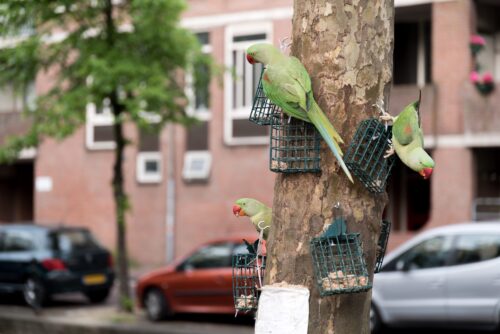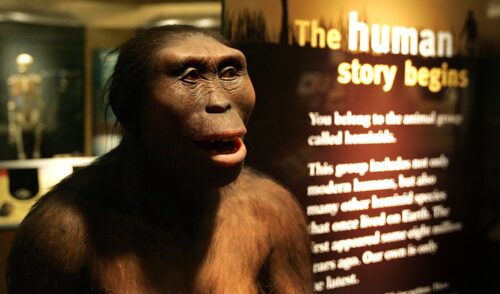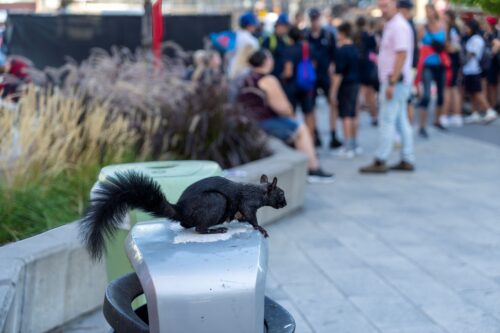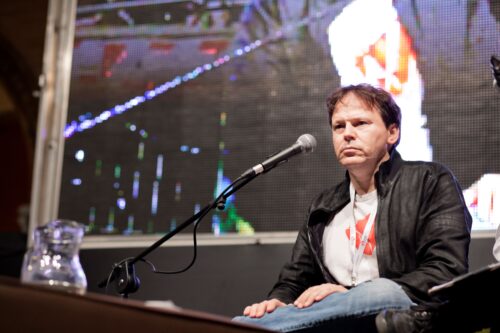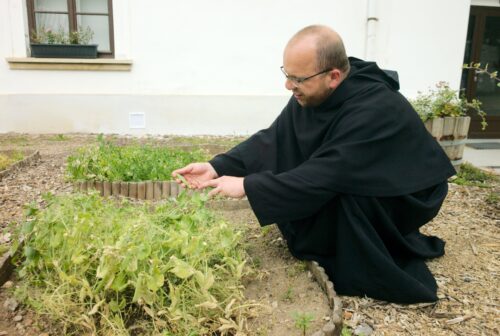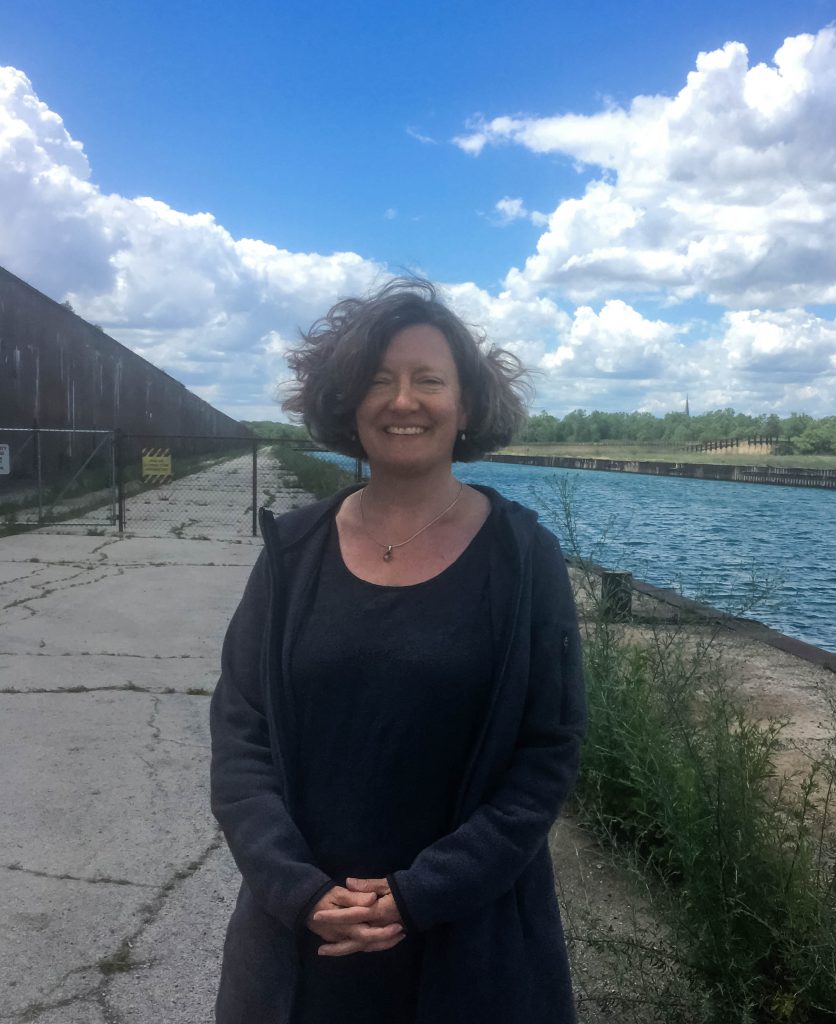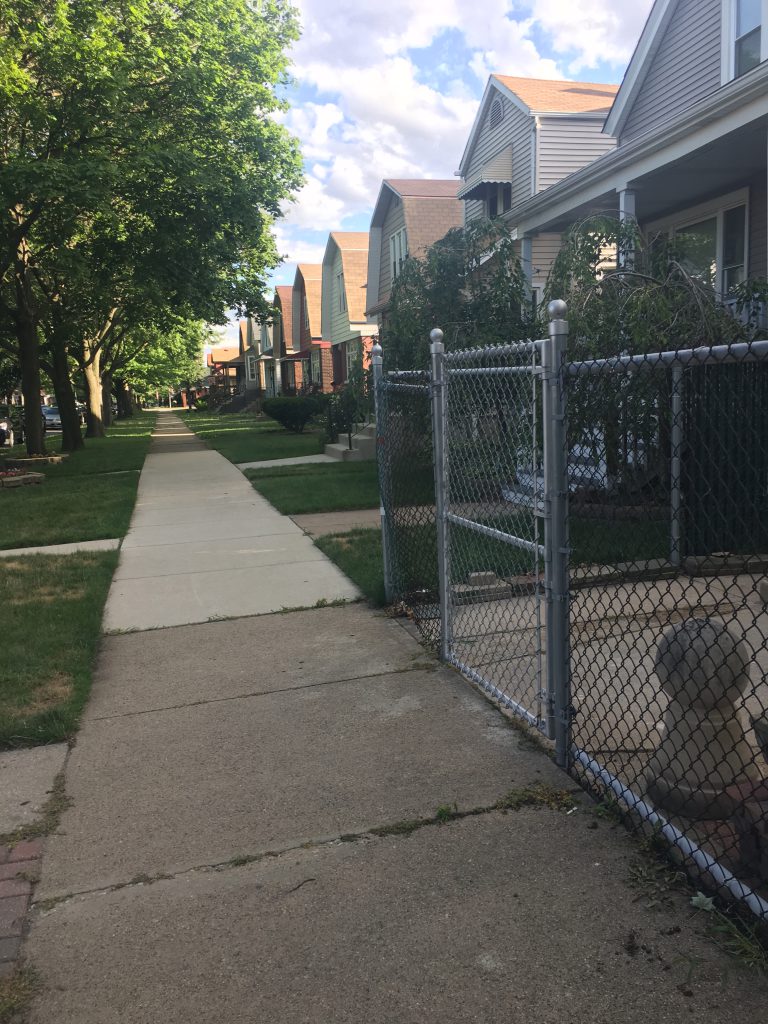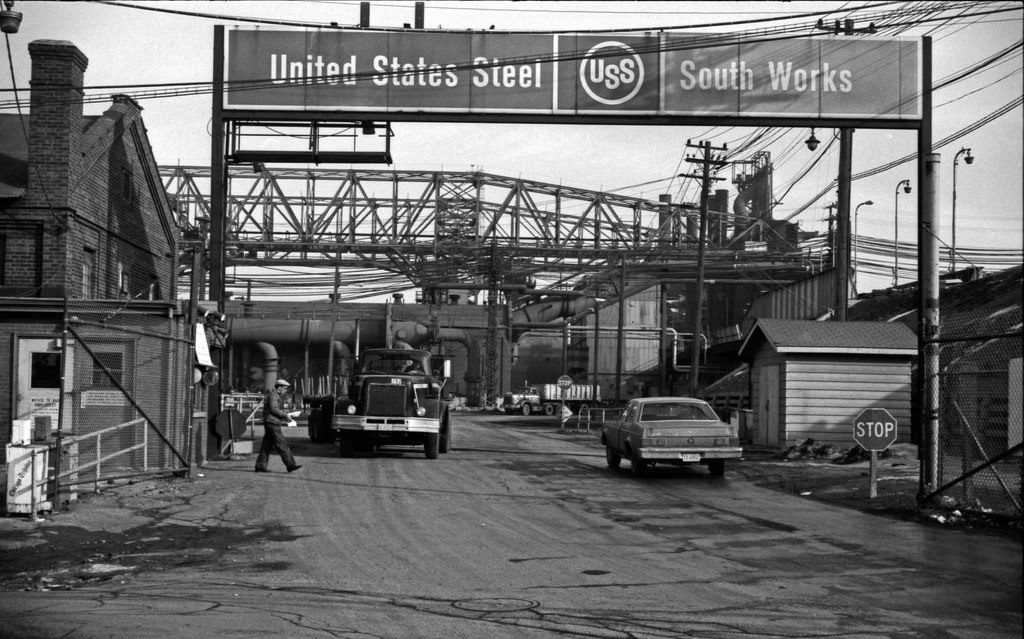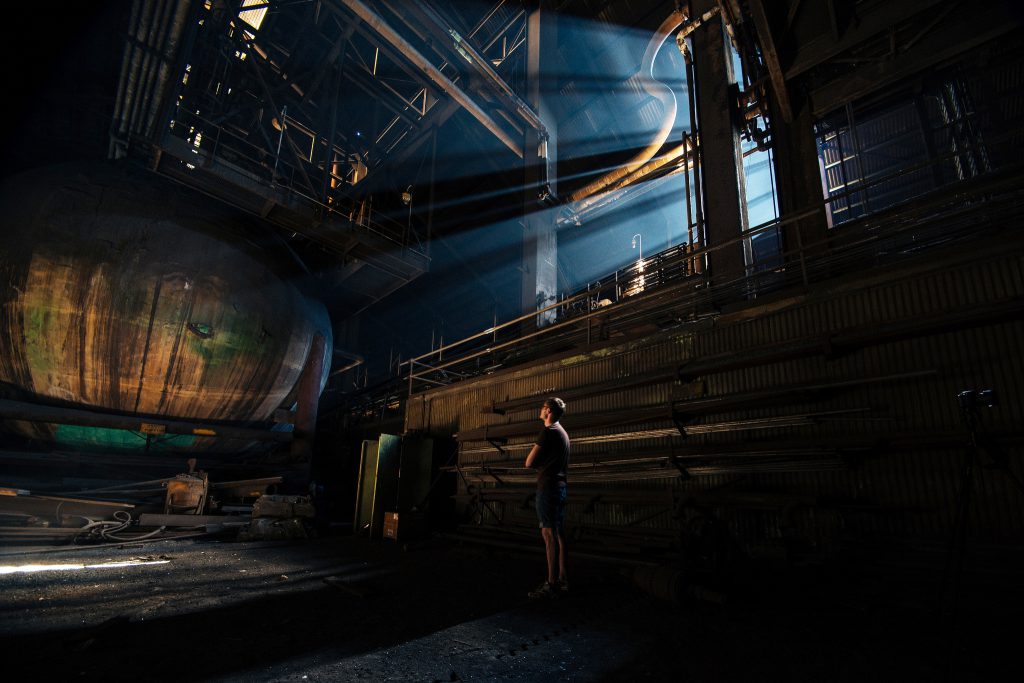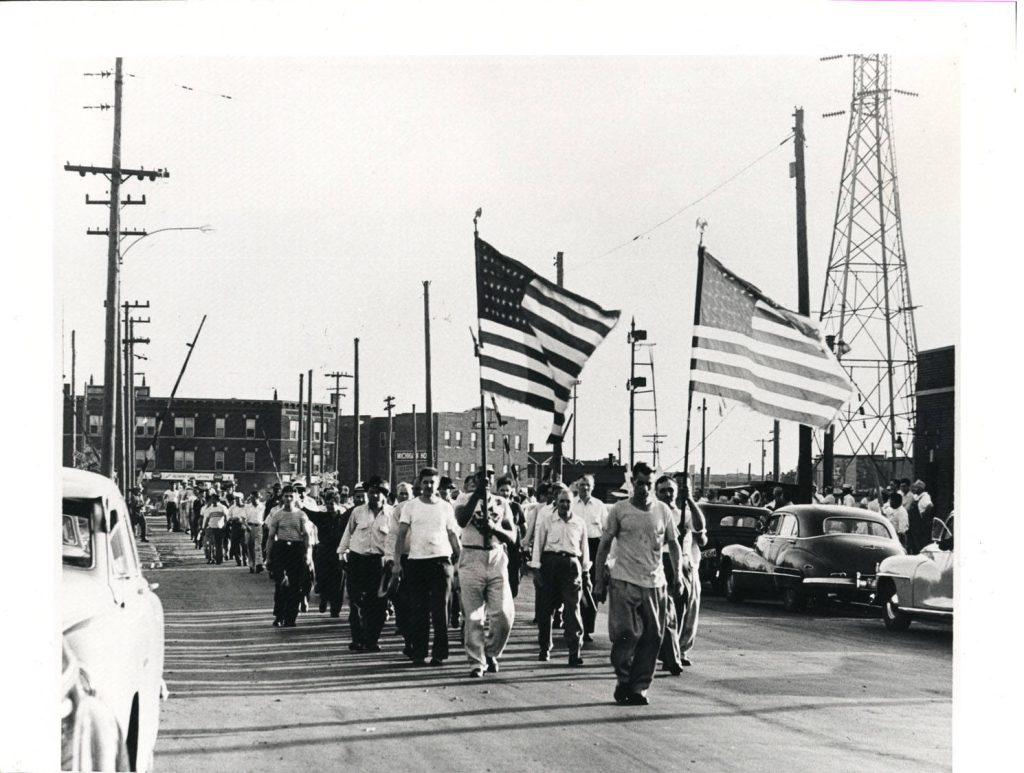Life and Death After the Steel Mills
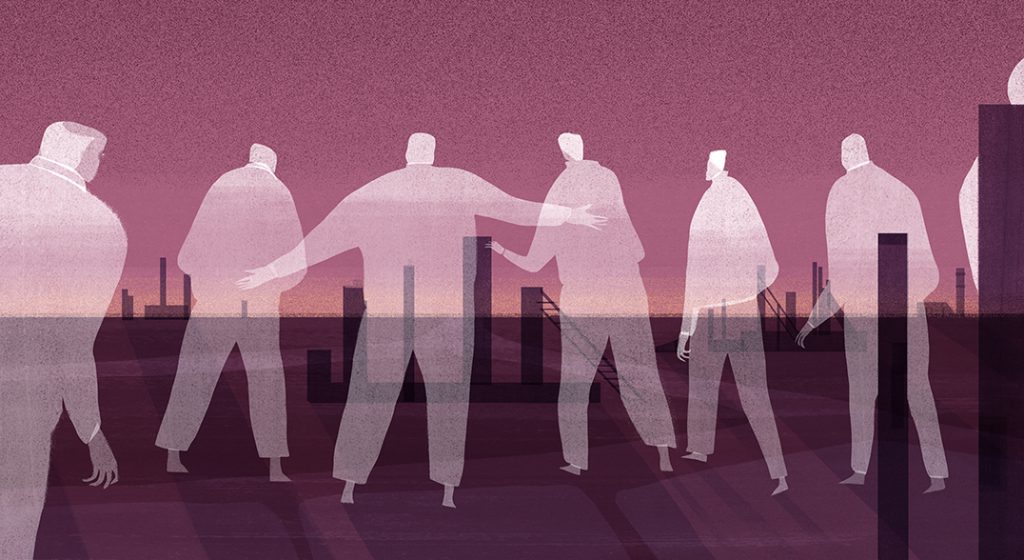
On the wind-whipped shore of Lake Michigan, a little over 10 miles from downtown Chicago, Illinois, stand what look like the foundations of a massive fortress. These hulks of concrete are the silent remnants of the U.S. Steel South Works production plant—an industrial behemoth that, in its heyday, employed more than 20,000 residents of the Chicago area. Though the plant shut down in 1992, the 30-foot-tall walls endure. “They tried to demolish them,” Christine Walley says, “but they were so big and heavy that they just couldn’t do it. So they decided to leave them as monuments.”
Just beyond the ruins is a dead-end channel carved into the lakeshore—the slip where ore boats once arrived. Most days, for more than a century, the boats would drop off hundreds of tons of raw materials to be forged into steel slabs and beams that strengthened bridges and kept skyscrapers aloft. But no ore boat has docked in this slip for more than 20 years.
As the middle daughter of three born to a Chicago steelworking family, Walley feels the weight of these ruins more than most. Her father, a longtime veteran of nearby Wisconsin Steel, lost his job when the mill closed in 1980 without warning. As other mill closures followed, Walley’s family and community fractured in ways that defied easy mending.
Now, as an established anthropology professor at the Massachusetts Institute of Technology in Cambridge, Walley is driven to understand what happens when industries that once gave blue-collar workers an identity and purpose disappear or wither away. Her work captures the erosion of key aspects of the American dream, according to Yale University anthropologist Kathryn Dudley. “Good industrial jobs with security and dignity for anyone willing to work was the promise held out by the New Deal coalition of the last century,” Dudley says. “As Chris documents so movingly, that promise was brutally broken. Nothing has replaced it.”
Since she became an anthropologist, Walley has written a book called Exit Zero: Family and Class in Postindustrial Chicago about her family’s dislocation in the wake of Wisconsin Steel’s closure. She also has collaborated with her film-producer husband, Chris Boebel, on a movie called Exit Zero: An Industrial Family Story. The latest phase of the Exit Zero Project, funded by the National Endowment for the Humanities, is a collaboration with the Southeast Chicago Historical Society museum to create an online collective history site, which will feature personal accounts of life after the steel mills closed and photographs of preserved objects from the mills’ heyday.
The deterioration of workers’ lives mirrored the deterioration of Southeast Chicago’s landscape.
Walley’s work pushes back against the common assumption that America is a classless society in which it is easy for people to shift social and vocational gears. She argues for closer scrutiny of laws and policies that allowed mill closures on a massive scale, and she questions the prevailing view that former industrial workers were the engine propelling President Donald Trump to victory.
But what most energizes Walley is gathering stories that reveal the trauma left-behind industrial workers have suffered. She is also focused on how to prevent such devastating fallout, which can stoke the kind of social and political unrest that’s roiling the U.S. as mining and manufacturing jobs disappear. “This stuff is talked about through things like statistics. People don’t get a sense of what it actually felt like,” Walley says. “Conveying it through stories gives a whole different perspective.”
Southeast Chicago’s mills were still cranking out a large portion of the world’s steel when Walley was born in the mid-1960s. Every morning, her father Chuck used to cross the bridge over the nearby Calumet River to head to his job at Wisconsin Steel, the area’s oldest mill. While the work was hazardous—men lost fingers and died in machinery accidents—it allowed him to support his family and promised him a comfortable retirement, with a generous pension.
All those givens fell by the wayside one morning when Walley was 14 years old. Her mother, Arlene, shook her awake, telling her, “Don’t worry, it’ll be OK. They called the ore boat back, but it’ll be all right.” Still groggy, Walley struggled to digest the cryptic words: She hardly knew what an ore boat was, much less the meaning of its being called back.
But when her father returned home that day, she learned that he—along with more than 3,000 other Wisconsin Steel employees—had been laid off. For years, the companies that owned the mill had neglected its upkeep, and the mill’s final owner, Envirodyne, was accused of deliberately draining the mill of its remaining profits before declaring bankruptcy. Chuck’s planned-for pension vaporized, and he was not even allowed to empty his locker before leaving the mill. “This moment would mark a crucial rupture for me and my family,” Walley writes in Exit Zero. “It sharply divided our lives into a time Before the Mill Shut Down and After the Mill Shut Down.”
Rows of modest brick bungalows still line the streets in Walley’s old neighborhood, Chicago’s East Side, and her mother and her sister Susie still live there. But just outside this residential core lie vast, chemically contaminated brownfields that extend for miles—former mill sites, most of which remain undeveloped. As you approach these barren stretches of land, all signs of human life drop away, save for the cars passing by. Here and there, slabs of concrete peek through the weeds like bare patches of scalp. “This was the entrance to the main gate,” Walley says as we drive past the old Wisconsin Steel site. All I can see of the once-mighty industrial behemoth is a chain-link fence blocking access to an overgrown driveway.
After Wisconsin Steel and other mills closed, the deterioration of workers’ lives mirrored the deterioration of Southeast Chicago’s landscape. For years after the layoffs, Chuck held down a series of odd jobs, doing night janitorial work and driving trucks. But the work paid very little, and the family struggled to feed their three daughters even though Arlene had also started working. “It did come to a time where I applied for assistance,” Arlene tells me as we sit in her living room on a humid June evening.
“That was, like, the government cheese,” Walley interjects. “That stuff was disgusting.”
Ashamed at his inability to support his family, Chuck descended into a fog of depression, lying on the couch and smoking cheap cigarettes. Meanwhile, more and more steelworkers the family knew were being laid off. Many former steelworkers felt they didn’t have anything to live for, Arlene says. “One of our friends down the block tried to do away with himself in the bathtub, but it didn’t work.” Chuck ultimately died of lung cancer in 2005, still not resigned to the unexpected turn his life had taken.
Stifled by the bleak atmosphere at home, Walley escaped at age 16, heading to the Phillips Exeter Academy, a boarding school in New Hampshire. Her parents were opposed to the idea at first, but the fact that money was tight helped sway them—having one daughter away at school, on scholarship, would mean one less person to feed at home.
Not only did they lose their livelihoods, they lost the work that gave their lives meaning.
As Walley established some distance from her childhood during her 20s, she felt a growing determination to make sense of what had happened—not just to her family and community but to so many others across the Rust Belt. That determination launched both Walley’s anthropology career and the entire Exit Zero Project, which has been in the making for more than a decade.
The Exit Zero book and movie primarily tell the story of Walley’s family’s postindustrial demise. But as Walley pieced these narratives together, she sought other perspectives as well, speaking to people in her neighborhood who had experienced the same sense of uprooting when the mill jobs went away. “It really helped make sense of the reactions my family had, and how pervasive all of that was,” Walley says.
Walley sees these former industrial workers not as relics who refuse to adapt but as survivors of a double trauma: Not only did they lose their livelihoods, they lost the work that gave their lives meaning. The social and psychological impact of industrial closures, she argues, was far more profound than most people recognize. “There was a sense of being passed over and forgotten as the years ticked by,” she says. Churches, restaurants, and other gathering spaces also began to shut down after the mills closed, leaving laid-off workers without social support to navigate the losses they were facing. Of the 3,400 local men and women who once worked for Wisconsin Steel, about one-quarter were dead just eight years later. Many succumbed to alcoholism, drug addiction, and suicide.
Nearly four decades after Walley’s father was laid off, the human toll of deindustrialization shows no signs of abating. Since 2000, the U.S. has lost about 5 million manufacturing jobs, which has affected hundreds of towns and cities all over the country. Factories that once sustained entire communities have been converted into warehouses, apartments, and storage spaces. Questions swirl amid the wreckage, as they have for years: What happened? Could it have been prevented? And—most crucially—what comes next?
To get at the roots of the trauma her community endured, Walley has spent hundreds of hours digging into the corporate decisions surrounding mill closures and the laws that allowed such closures to proceed with ease. She argues that the industrial unraveling that happened in communities like Southeast Chicago and Detroit, Michigan, was not an inevitable result of globalization. Certainly, American industry faced more competition from overseas as the 20th century progressed, and it continues to face such competition today. But in the end, she thinks, regulations that favored the interests of businesses over those of workers were what cemented the U.S. industrial collapse. “One of the narratives that’s really problematic is, ‘This is just progress to the new kind of economy,’” Walley says.
Beginning in the 1970s, the political pendulum swung toward laxer regulation of corporate activities—a trend that accelerated during the Reagan era. Hands-off federal laws allowed companies to merge and acquire new companies with little interference, and companies were permitted to operate more fully while in the throes of bankruptcy. Laws like these aided many investors’ strategies of buying up older U.S. manufacturing enterprises, neglecting pension funds, milking profits, and allowing the enterprises to go bankrupt—which is just what happened at Wisconsin Steel, where Chuck Walley once worked. To this day, workers are left with limited recourse against such corporate schemes, and in many cases, labor unions have had difficulty securing additional benefits or job retraining for workers who have been laid off.
“What were the changes that allowed companies to acquire and sell companies in such an easy way?” Walley says over breakfast at a neighborhood diner. “How did we partly create this terrain through public policy—through what was allowed to happen economically?” In Canada, she points out, policies were in place in the 1970s and 80s that encouraged companies to modernize and funnel profits back into mill upkeep. As a result, not a single Canadian steel mill closed at a time when increasingly neglected and obsolete American mills were falling like dominoes. Germany, too, has managed to maintain a robust industrial economy despite fierce global competition.
Still, other analysts like Jerry Kaplan, the author of Humans Need Not Apply, contend that corporate-friendly laws are far from the only factor in the decline of industrial employment. Some labor-market shifts, they say, are inevitable because more and more jobs are now done by machines, not workers—a trend that doesn’t seem likely to reverse.
Whatever the precise causes of industrial stagnation, Walley says the end goal shouldn’t just be preserving industrial jobs per se, which often involve backbreaking labor and have long-term health and environmental effects. Instead, it should be finding ways to create and sustain work that supplies a livable wage, as well as encouraging governments and local residents to buoy up laid-off workers who are struggling. “What kind of support have we been offering to communities?” Walley says. “There’s choice in how countries respond.”
Walley’s postmortem on American industry also makes the case that very real class lines still exist in the U.S.—and that trying to cross them, as some veterans of industry do, is more difficult than people assume. “The U.S. is a country out of practice talking about class,” she says, in part because of the widespread belief that we live in a classless society. But when Walley left her working-class home on Chicago’s East Side to attend posh Phillips Exeter Academy as a teen, she realized her intelligence and drive didn’t help her fit in among her new schoolmates. They sneered at local town residents’ polyester outfits and took their own privilege for granted, while Walley worried about how she would pay for college and feared sounding uneducated.
“It was such incredible dislocation when I got there,” Walley says of Exeter. “I really didn’t have a way to process the kinds of class differences I saw.” And when she returned home on school breaks, the people she’d grown up with didn’t relate to her the same way they once had—they suspected she thought she was now too good for the community where she’d been raised.
It appears that Southeast Chicago voters’ overriding motive was not bigotry or insularity, but upending the economic system that had failed them.
Former industrial workers, Walley points out, face similar issues when they try to start from scratch and pursue higher education to boost their earning power. She believes that when people are afraid to talk about class, it’s harder to confront and solve problems like economic inequality. The gap between rich and working-class families in America has widened steadily since the late 1970s, reflecting workers’ lack of power in an unregulated global economy.
With economic change proceeding at warp speed and growing numbers of industrial workers getting left behind, it’s easy to buy into the widespread narrative that displaced blue-collar workers fueled the recent rise of the populist right—and ultimately Trump’s election. But Walley’s preliminary analysis of Southeast Chicago’s election data tells a more nuanced story. As in the rest of the Rust Belt, she says, most people from former industrial households in her old neighborhood were swing voters, not core Trump supporters. “While voting patterns varied widely based on race and ethnicity, there was strong support for Bernie Sanders in the primary.” That suggests people who’ve suffered postindustrial hardship may be apt to abandon Trump if he doesn’t follow through on his promises to bring back jobs. According to recent Gallup polling data, Trump’s support among working-class whites in the Rust Belt has already dropped since last November’s election—in some states, by double digits—perhaps because they’re starting to doubt his concern for them.
If, as Walley and various scholars and journalists suggest, many whites in the Rust Belt were perched on a knife’s edge between Trump and Sanders, the stereotype of embittered industrial workers sliding into right-wing zealotry is clearly inadequate. It appears that Southeast Chicago voters’ overriding motive was not bigotry or insularity, but upending the economic system that had failed them—and that many would be amenable to a rising tide that lifts all boats.
It is in the personal details of Walley’s narrative that its universality comes through most powerfully. It illuminates displaced workers’ quest to recapture a sense of dignity, as well as the deep human need for work that is both productive and meaningful—a mission that continues as the Exit Zero Project evolves. In the humid headquarters of the Southeast Chicago Historical Society museum, Walley explains her latest venture as her young adopted son, Nhan, runs around in the background. With a US$195,000 grant from the National Endowment for the Humanities, she is developing an interactive online forum that will feature oral histories collected from neighborhood residents, as well as objects they donated that represent their lives during the steel era.
Such acknowledgment of U.S. industrial workers’ role in the country’s development is crucial, says Dudley, the Yale anthropologist who also studies industrial flight. Dudley’s book The End of the Line records the experiences of workers in Kenosha, Wisconsin, after the city’s Chrysler auto assembly plant closed. “The collective impact is one of being knocked back and being very unsure,” she says. “The reality that you were building your life around is suddenly wiped out.”
Dudley senses that what matters most to laid-off workers is a chance to feel useful and necessary. To that end, she is working with a community arts program that records the oral histories of former industrial workers, and she advocates for programs that give them a chance to share their hands-on skills with others. “[It’s] not just about ‘This is done and gone and past,’” she says. “What is the continuing importance of the culture that essentially built this country?”
Some postindustrial communities have opted to leave much of their history behind, forging a new cultural identity by shifting to a more gambling-focused economy. Ethnographer and urban historian Chloe Taft, formerly at Yale, studied the onetime company town of Bethlehem, Pennsylvania, where the 139,000-square-foot Sands Casino Resort Bethlehem now stands. Taft—the author of From Steel to Slots—sees Bethlehem’s approach as a temporary answer to a problem that is anything but. Most patrons are bused in from out of town, and the casino must compete with other Mid-Atlantic casinos for the same glitzy customer base. “They’re ultimately all going to cannibalize each other’s markets,” Taft says.
As Walley and I face the stiff gusts on Lake Michigan’s shore, it’s clear that questions about the best way forward are on her mind. Though the Chicago skyline is visible in the distance, it’s the dilapidated remains of U.S. Steel’s South Works that loom largest. “People had good reason to be nostalgic,” Walley says of the workers who mourn Chicago’s lost steel heyday. “It was a point when they really felt part of the American fabric and that the work they were doing had some kind of value.”
As automation—increasingly powered by artificial intelligence—continues its steady march, she thinks white-collar workers will begin to confront the same displacement and anxiety blue-collar workers have faced for decades. A 2013 University of Oxford study has reported that about 47 percent of all U.S. jobs are at risk of being lost to automation. Walley hopes this ongoing transition will prompt fresh discussions about what fulfilling and useful work can look like, as well as new debates about laws and policies that elevate corporate interests over workers’ well-being. “Is it about industry,” she says, “or is it about people who are affected?”

